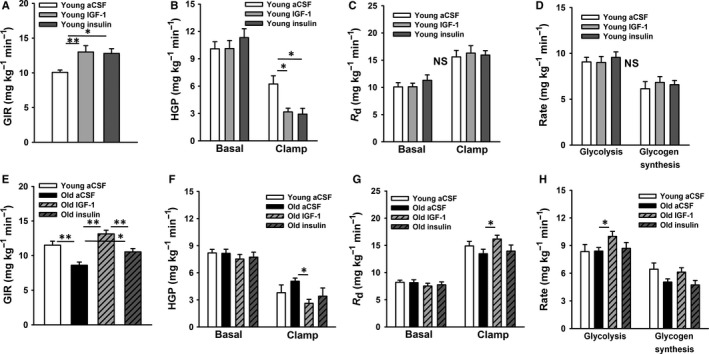Figure 2.

Results for the hyperinsulinemic‐euglycemic clamp study in young (A–D) and young vs. old rat experiments (E,F), respectively. (A) In young animals (n = 5–9 per group), the glucose infusion rate (GIR) required to maintain euglycemia during a 3 mU kg−1 min−1 clamp was similarly increased by central insulin‐like growth factor‐1 (IGF‐1) (1 μg total dose) or insulin (30 μU total dose). (B) This was due to enhanced suppression of hepatic glucose production (HGP), (C) as glucose disposal, (D) whole‐body glycolysis and glycogen synthesis rates were not significantly altered. We next treated old animals with intracerebroventricular insulin or IGF‐1 (n = 5–7 per group; E–H). (E) When compared to young controls, old animals had a significantly lower GIR, but central IGF‐1 markedly increased the GIR, as compared to artificial cerebral spinal fluid or insulin in old animals. (F) Central IGF‐1, but not central insulin, significantly suppressed HGP, as compared to old controls. (G) Likewise, central IGF‐1, but not central insulin, significantly increased glucose disposal rates (R d), as compared to old controls, (H) which was largely due to an increase in whole‐body glycolysis. *P < 0.05, **P < 0.01.
